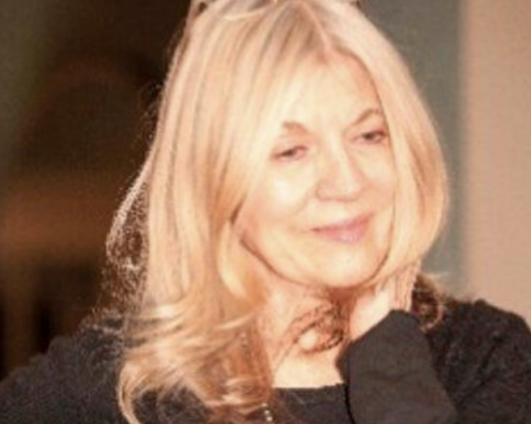Interrogating interactivity and participation
Gail Vanstone & Carolyn Steele – Case Study: Interactivity and Indigenous Fourth Cinema: Decoding /Recoding Documentary Approaches
Jodi Nelson-Tabor – Interactive Storytelling: An Investigation of impact for CBOs through new forms of doc filmmaking as an agent for social change in online activism
Case Study: Interactivity and Indigenous Fourth Cinema: Decoding/Recoding
Documentary Approaches.
Key words: Interactivity, Fourth cinema, Indigenous women filmmakers, ‘Indianess’,
settler imaginary, decolonisation.
Our proposed case study is a work-in-progress project interrogating the
applicability of interactive affordances in a specific media archeology, derived from a
compilation of documentaries created by Indigenous Canadian women filmmakers.
In 2003, Maori filmmaker and theoretician, Barry Barclay proposed a ‘Fourth
Cinema’: It seems likely to me that some Indigenous film artists will be interested in
shaping films that sit with confidence within the First Second and Third cinema
framework …to shape a growing Indigenous cinema outside the national orthodoxy.’ His
proposition did not seek to rework cinematic language– it championed the notion that the
expression of Indigeneity is possible within cinematic norms.
We examine Barclay’s proposition in terms of Indigenous women documentary
filmmakers in Canada to argue that the conditions of reception of such works by
audiences (Indigenous and non-Indigenous) illustrate the viability of Barclay’s position.
We ask ‘to what extent is the reception of such works affected by interactive
presentation, specifically on settlers?’ Our stance is that of two white Canadian women
using this project to reexamine our cultural/historical/colonised location to better and
more accurately appreciate Indigeneity. We seek an opportunity to broach a culturally
sensitive question, namely, how can ‘settler’ audiences “come to understand more fully”
the significance of what we are seeing in the spirit of what Indigenous scholar Emma
LaRoque calls ‘decolonisation’ a concept encompassing that of ‘truth and reconciliation’.
We propose using our prototype of the feminist quilt project ‘What did She Say?’
to set up an interactive situation with material selected from the sustained documentary
output spanning three generations of First Nations women filmmakers in Canada.
Grounded in terms of feminist narratology, their practices ruffle and challenge the ways
we engage intellectually. The works of these women — unique and oppositional — reflect
what Thomas King has called “Indianess”– a different sensibility running counter to or
lying behind normative western cultural modes.
Our case study interrogates the “i” – of the settler imaginary in relationship to
documentary evidence of Indigenous cultural “truths” as evidenced in our curated survey
of Indigenous documentary films. It straddles the “i” of impact and innovation suggesting
an intervention that, we hope, promotes inclusion, probing cross-cultural perspectives and
diversity in making and engagement.
Interactive Storytelling: An Investigation of Impact for CBOs Through New Forms of
Documentary Filmmaking as an Agent for Social Change in Online Activism
The research project investigates paradigm shifts in digital technology and emerging documentary
production methodologies. And how non-linear forms of media practice shape new forms of collaborative
storytelling. Specifically, interactive and non-linear media making through the exploration of online
activism and whether impact can be achieved through participatory media making.
The aims are to consider assumptions made by designers of interactive/collaborative documentary – that
non-linear forms of media provide new forms of engagement for online audiences (“Users”), which are
more likely to lead to social and political action. Identify the core situation, which is that most non-profits
fail to reach their targeted audiences with relevant messaging. Research indicates 76% fail to motivate
the actions needed to move their mission forward, which is to give/donate, volunteer, join or advocate.
A number of critical and creative practice methodological approaches will be applied.
The methodological approach is to utilise and interact with digital technologies and interactive storytelling
through its facilitation non-profit Community-based organisations (“CBOs”), or grass roots organisations.
Specifically, focus on the social issues of young women, gender influence and their inclusion in media (e.g.
as subjects and end-users). Further, participatory communities using social media platforms in coherent
and cohesive ways can be trained in new forms of media practice for the purposes of acting as agents of
social change. To measure how and whether interactive, collaborative, networked platforms involve
inherently more ‘active’ engagement compared to older media forms, described as more passive forms
of media.
Anticipated research outcomes pose opportunities to advance both technical and skills-based training in
the areas of media production and media literacy in its exploration of online activism through practice-
based/participatory filmmaking approaches. Additionally, acquire and transfer new knowledge by
training-through-research to further enhance and maximise its contribution to the creative and
knowledge-based economy.
The potential benefits from these creative approaches can develop new pathways for collaborative
interface, user experience and reception. Further investigation if whether tangible (i.e. social, political,
economic) and/or intangible contributors (i.e. empowerment, self-confidence, new skills, critical and
creative thinking) can be achieved. Additionally, by addressing the core situation, if new forms of media
and public engagement will motivate the actions needed to move their mission forward.
Key words: activism, participatory filmmaking, interactive web documentary, new media practice


